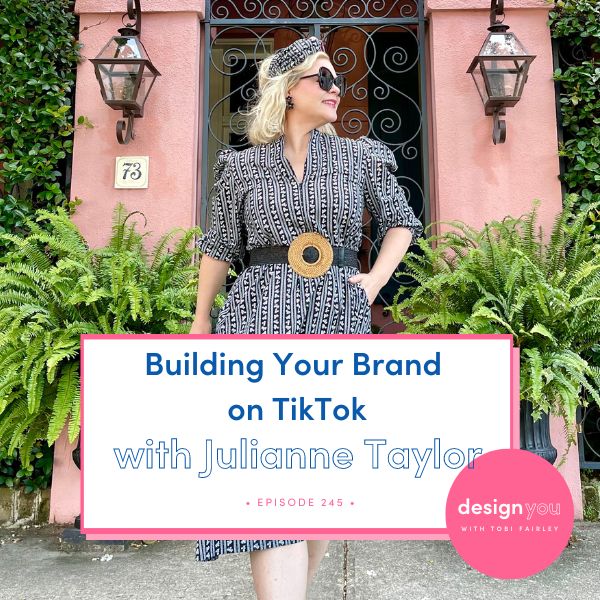
Have you been thinking about short-form video? You are going to love this week’s podcast! I’m joined by a very special guest this week and we’re discussing becoming a short-form video expert, using what you have, and what it really means to be an influencer.
Julianne “JuJu” Taylor is an incredible content creator, product designer, mindset speaker, and founder of Taylor Burke Home. With a BFA in interior design and a masters in human resources, JuJu marries creativity and a strong business acumen to help her communities find joy in the everyday through working smarter, not harder. She’s the author of DesignHER (2016) and has licensed collections of wallpaper, artwork, and tabletop sold through various retail outlets.
In this episode, join Julianne and I for a conversation about how to connect with the people managing influencer partnerships, what it looks like to fulfill content partnerships, and why you should just embrace the camera now. Our conversation will have you heading right to TikTok to get started!





